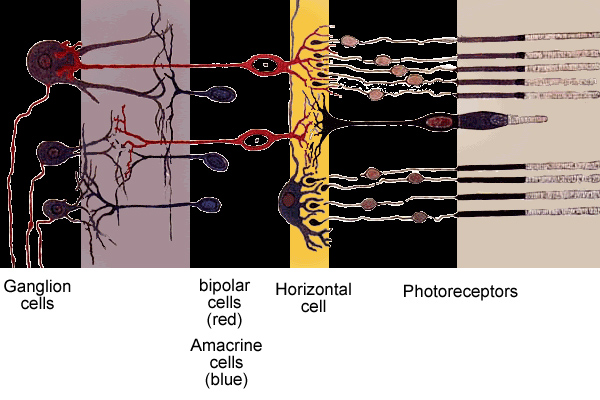The Claim that the Retina of the Eye is Imperfectly Constructed
Richard Dawkins in his book The Blind Watchmaker made a claim that has been repeated many times.[1] He described how the retina in our eyes, as with all other vertebrates, has an odd wiring system. It has been known for a long time that the part of the retina that actually registers light in photoreceptor cells (rods and cones), is outermost (away from the light source) and that the light therefore has to traverse various layers of ‘wiring’ and ‘glial’ cells (otherwise known as Muller’s cells) before reaching the photosensitive area. It seems at first glance to be a poor way to gather light because of the intervening layers. As he says: “Any engineer would naturally assume that the photocells would point towards the light, with their wires leading backwards towards the brain.” His point of course is to pour scorn on any idea of a ‘designer’. To him and many others this has seemed like plain bad design. It is repeatedly used to attack any idea of an intelligent designer.

The well known atheist philosopher Daniel Dennett has also called this a “clumsy arrangement.” [2] The evolutionary biologist George Williams called the arrangement a “maladaptive historical legacy.” [3] Frymire in his book which attacks intelligent design called it a “classic example of a stupid feature”.
I remember reading Dawkins on this point some years ago and I was somewhat astounded at his attitude of knowing it all. He decided, like many, to make a claim about ‘poor’ design based on his own worldview about blind evolution, rather than patiently waiting to see if there was more evidence - humanly understandable perhaps, but not good science. He and others compared the vertebrate eye to that of molluscs such as the octopus, where the retinal wiring is the other way around – which to him seemed a much better system. This of course ignored the fact that the best vision of all, that of an eagle, is with eyes boasting the same wiring as ours.
Researchers have however completely overturned this view of the retina. Labin and Ribak built a model of the retina and showed that the direction and position of the glial cells helps increase the clarity of human vision.[4] The eye usually receives too much blue light. They showed that green and red are concentrated five to ten times more by these glial cells than blue light. Further testing in guinea pig retinas involved scanning light for 27 colours in the visible spectrum. Light was not scattered but was transmitted in elongated columns down to the cones (the colours sensitive cells at the back of the eye) and was concentrated up to ten times compared to average intensity. Also the colours that were best guided by the glial cells matched nicely with the colours of the cones allowing them to function better. They conclude that the retina has been optimised so that the sizes and densities of the glial cells match the colours to which the eye is sensitive.
A further research paper showed that the glial cells can guide light, just like fibre optic cables.[5] Later research confirmed these findings.[6]
In conclusion, the positioning of the glial cells and the wiring between the incoming light and the colour sensitive cones is essential to optimise colour vision and to give greater clarity to vision. Far from being poor engineering, it is in fact a marvellous and richly complex system for improving sight.
Dawkins similarly used the idea of ‘Junk DNA’ to argue against design.[7] To him, at that time, the majority of DNA was seen to be non-coding and useless ‘junk’. The analogy he made was to the deleted files on a computer hard drive, which remain there but are useless. We now know of course that what was called junk DNA is incredibly important. More and more discoveries are being made about its use in regulating the genetic expression in cells.
The lesson here is that we need to be cautious about any claim that life is poorly designed and take with large measures of salt any suggestions based mainly on ignorance and a priori worldviews.
Antony Latham. July 2017
[1] Dawkins, Richard. The Blind Watchmaker. Longman 1986. P 93.
[2] Dennett D. Show me the science. New York Times. August 28 2005.
[3] Frymire P. 2000. Impeaching Mere Creationism. San Jose, California; Writers club press.
[4] Labin A.M., Ribak E.N. Phys. Rev. Lett. 104, 158102 16 April 2010
[5] Reichenbach A, Bringmann A. New Functions of Muller Cells. Glia May 2013.
[6] Labin A.M., Safuri S.K., Ribak E.N., Perlman I. Muller cells separate between wavelengths to improve day vision with minimal effect upon night vision. Nature communications, 2014 – nature.com
[7] Dawkins, Richard. The Blind Watchmaker. Longman 1986. P 173.
Image credit:
Thumbnail and article - This work is licensed under the Creative Commons Attribution-ShareAlike 3.0 Licence
Antony Lathan, 17/07/2017